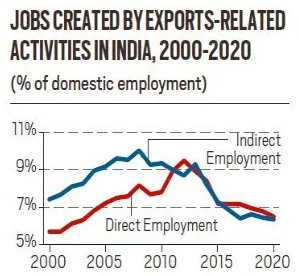7667766266
enquiry@shankarias.in
A new World Bank report released recently has highlighted the decline in low skill related jobs in India over the past decade.
|
Status of Low and High Skill Gap in India |
|
The WTO Tariff Profile for 2022 also indicates that India’s average Most Favoured Nation (MFN) tariff increased to 18.1 per cent, up from 17.6 per cent in 2019 and 13.4 per cent in 2016.

Quick Facts
The Indian Express | Disparities in Low and High Skilled jobs